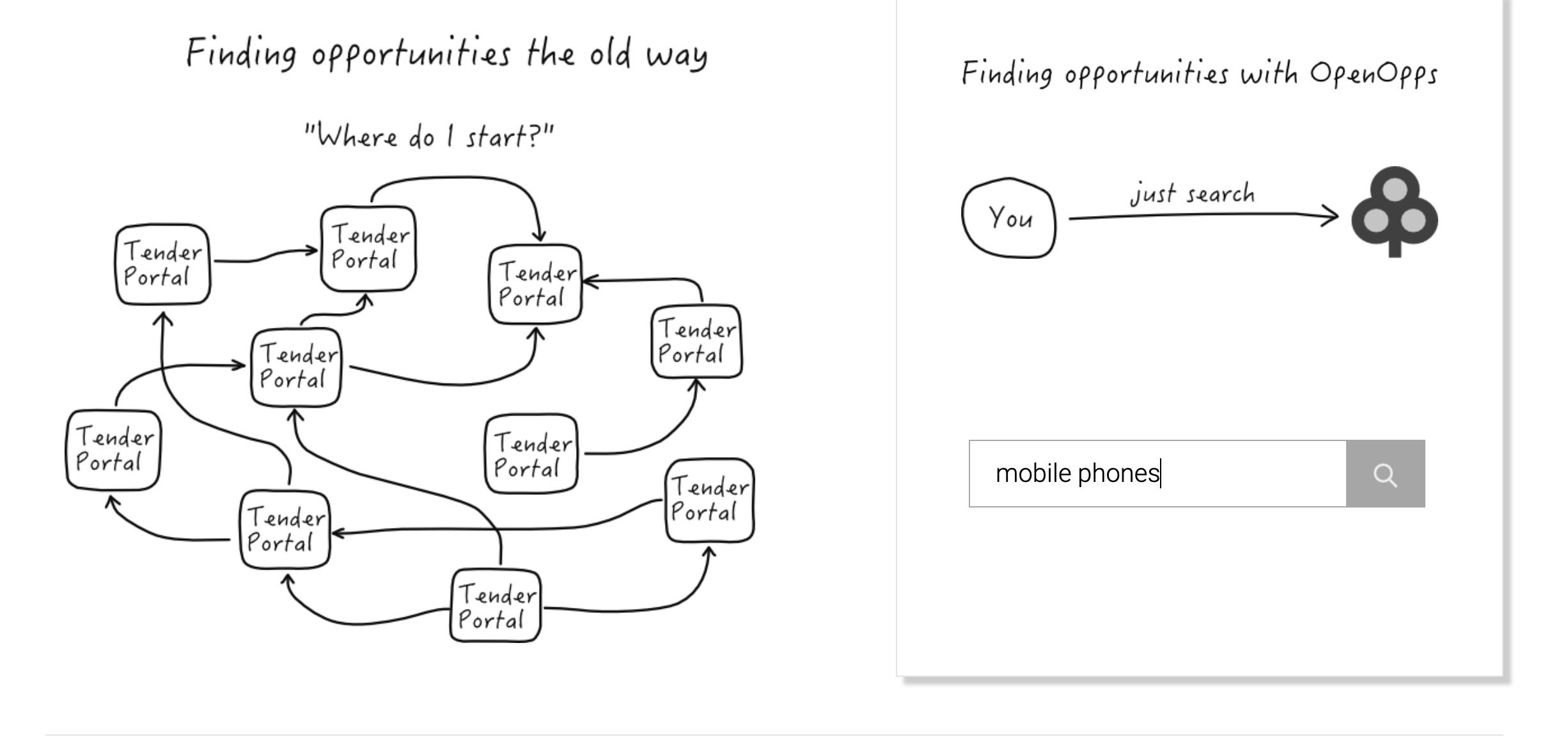Solving Search

Search is difficult.
By that we mean building a service that delivers the right information to people who are searching for it.
In our world of searching for business opportunities, there’s a range of tools and techniques that can be used to make search more rewarding for users.
Let’s first understand the problems. It is common for users to want to use keyword searches to return documents. So a user might search for the words “mobile phone” and the database will return matches. Unless the users sends out a strict search (a search only for documents that includes those exact words) the database will return documents of exact and near matches.
Sometimes that’s good. So if you’d searched for “mobile phone” in most cases you’d also want to see opportunities for “mobile phones” with an ‘s’ as well. However, if you get opportunities for “mobile homes” as well then the database is giving the user the wrong information. Equally, the database might also miss records, so if you search for “mobile phones” the database probably wouldn’t return documents that use the words “smart phones”.
So users might start out with fairly strict or tight terms when searching, but quickly discover that they have to use loose terms in order to avoid missing the required opportunities. So “mobile phone” quickly becomes “phone” and then the user has to work to filter out anything that isn’t relevant such as a “phone helpline”.
This gives users a challenge where they have to increase the cognitive load of parsing search results in order to secure confidence that they have searched for every possible opportunity.
We make searching easier for users by adding additional features into the data. These can then be used to filter on and reduce the amount of false positive records that are returned. For example, we add categories, addresses and buyer names into the data.
This means that users working with our data could search for “phone” in the technology hardware category and be sure that they wouldn’t return any opportunities for “helplines”. If you the user wants to find data from a region or a specific country, they can add that to their filtering too, confidently reducing the number of false positives.
Our records can also be used to sort and group documents, so that more relevant documents can rise to the top of the results list. Using this alongside features such as highlighting words in the text, recommending similar documents and allowing for additional filtering creates a positive experience for your users.
Building search experiences that are a joy to use are about having good data. If you’d like to know more about our data services, get in touch.
Read more about our data here,or read our blog post on categorisation here.



